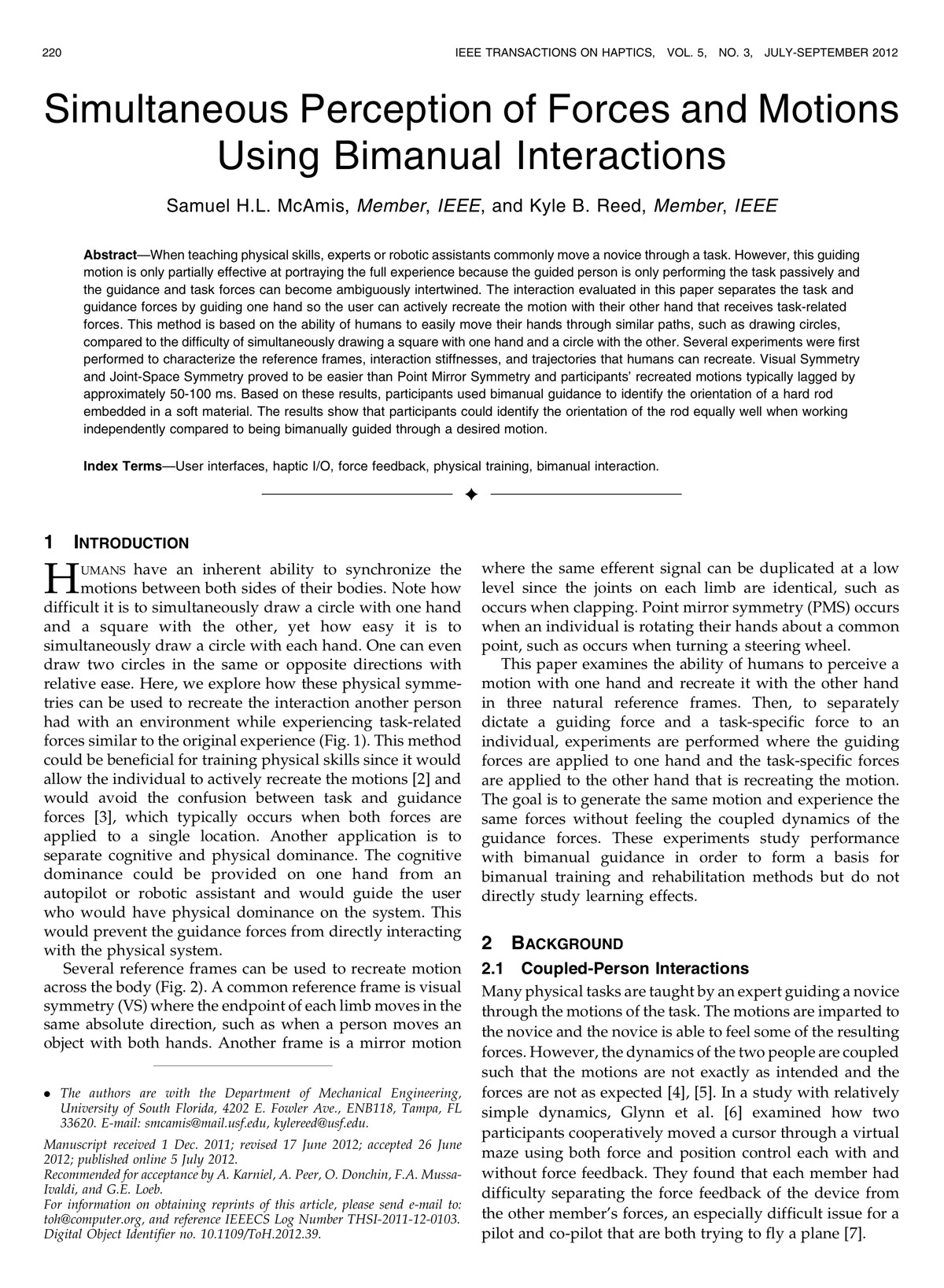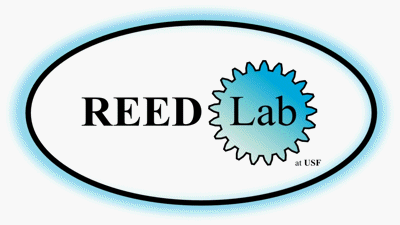|
|
Simultaneous Perception of Forces and Motions Using Bimanual Interactions
Abstract - When teaching physical skills, experts or robotic assistants commonly move a novice through a task. However, this guiding motion is only partially effective at portraying the full experience because the guided person is only performing the task passively and the guidance and task forces can become ambiguously intertwined. The interaction evaluated in this paper separates the task and guidance forces by guiding one hand so the user can actively recreate the motion with their other hand that receives task-related forces. This method is based on the ability of humans to easily move their hands through similar paths, such as drawing circles, compared to the difficulty of simultaneously drawing a square with one hand and a circle with the other. Several experiments were first performed to characterize the reference frames, interaction stiffnesses, and trajectories that humans can recreate. Visual Symmetry and Joint-Space Symmetry proved to be easier than Point Mirror Symmetry and participants' recreated motions typically lagged by approximately 50-100 ms. Based on these results, participants used bimanual guidance to identify the orientation of a hard rod embedded in a soft material. The results show that participants could identify the orientation of the rod equally well when working independently compared to being bimanually guided through a desired motion.
[ download pdf ]

|





